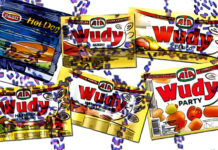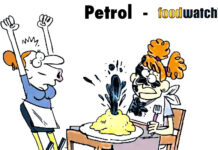The interruption of the cold chain is a cause of many food-borne toxins, d’summer especially. In Turin, consumer education campaign and spot checks by ASL
Consumption of poorly preserved foods can expose you to serious health risks. The cold chain-that is, the storage temperature of perishable foods-must be maintained continuously, from the production plant to the point of sale. But the rules are often violated, especially in the transportation and final distribution stages. Through carelessness and ignorance, but also through cunning. Since ensuring cold weather requires investment in appropriate refrigeration equipment (with anti-dispersion doors, for example).
Transportation and distribution of food, the sweeping checks of the ASL of Turin
This summer, the ASL of Turin launched a program of enhanced controls on maintaining the cold chain in the transportation and sale stages of food. With alarming results.
‘In inspections conducted in recent weeks, 60 percent of the outlets viewed, including supermarkets, large-scale retail outlets and delicatessens, were found to be non-compliant,’ explains Claudio Biglia, veterinary manager of the ASL City of Turin.
Even more serious are the results of inter-agency checks conducted on refrigerated trucks, with the help of traffic police. In 4 out of 4 cases the transport conditions were not in compliance (!). Penalties of 6 thousand euros were accompanied by an order to reorganize transportation according to current rules. Also taking into account EFSA Opinion 2017, on the risks of cold chain interruption forready-to-eat ( RTE) foods.
Food safety after food purchase, transportation and storage
The consumer in turn must take appropriate precautions, to avoid compromising the safety of food after its purchase. Transportation and storage are the crucial steps in which the cold chain must be maintained.
Inspectors from the Veterinary Service and the Food and Nutrition Hygiene Service of the Turin Local Health Authority organized and conducted several information days inside supermarkets.
Using an infrared camera, the coldest spots in household refrigerators were shown. Recommending following some simple rules, such as
– introduce refrigerated foods into the cooler bags at the time of purchase, take them home and place them in the refrigerator as quickly as possible,
– Do not overload the refrigerator and monitor its temperature and efficiency,
– Consume foods quickly and avoid buying in excess.
To improve knowledge on these aspects, the Turin ASL departments themselves are organizing an experiment together with the Department of Agricultural and Forestry Sciences of Turin University. For the specific purpose of verifying the impact of transportation from point of sale to home (with or without stopping for additional purchases on the way home) on food safety.
Small temperature fluctuations favor superbacterium
Small and repeated temperature changes increase food safety risks because they ‘train’ the bacterium to resist temporary temperature recovery, making it more resistant and aggressive.
Compliance with the correct temperature must therefore continue without interruption, from the slaughtering (or vegetable harvesting) stage until the time of consumption. Although the news these days reports cases of listeria on vegetables, the risks are generally concentrated in foods of animal origin.
Food safe, three temperature levels
There are three prescribed temperature levels for food storage.
0-4 degrees. The temperature should never exceed 4 degrees for raw foods of animal origin. In addition to meat, creams, cream, etc. fall into this group.
Up to 10 degrees. Cooked foods can be stored at this temperature. Through suitable cooking the microbial flora is in fact deactivated. This includes foods such as ham sandwich.
Over 65 degrees. Food must cook at this temperature in order for the risk of toxins to be eliminated.
Note well that foods of animal origin should never be stored at temperatures between 10 and 65 degrees, a range in which bacteria reproduce.
Keeping cold does not mean cooling
Confusion between the concept of keeping cold or cooling is one of the irregularities found in stores by Asl inspectors. The exemplary case is meat processing.
The worker who takes the piece to be portioned out of the cold room and processes it in a 15- to 18-degree environment does not consider the temperature range. Thus, once the food is portioned and placed in the classic Styrofoam trays, he arranges it in a 4-degree refrigerated display case.
Without taking into account that in the meantime the food has reached about 8 degrees, and requires a return to the cold room for a few hours before being displayed for sale.
Professional journalist since January 1995, he has worked for newspapers (Il Messaggero, Paese Sera, La Stampa) and periodicals (NumeroUno, Il Salvagente). She is the author of journalistic surveys on food, she has published the book "Reading labels to know what we eat".








